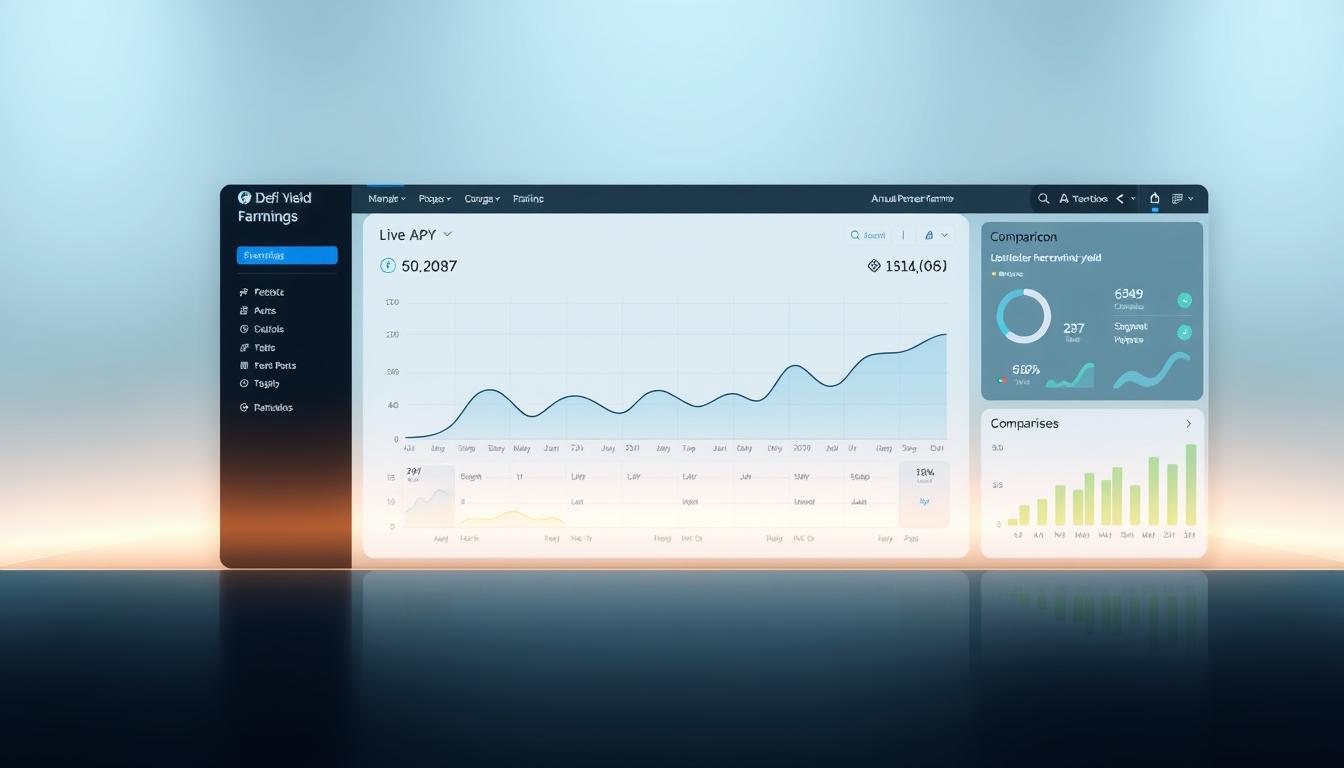Now Reading: Discover the Best Blockchain Programming Languages to Learn
- 01
Discover the Best Blockchain Programming Languages to Learn
Discover the Best Blockchain Programming Languages to Learn

The tech world is rapidly transforming. The global market for distributed ledger technology is exploding. Experts project its value to reach an astounding USD 1,879.30 billion by 2034. This growth creates a massive need for skilled professionals.
Between 2017 and 2020, demand for specific skills in this area surged by nearly 2000 percent. This makes it one of the most highly-valued specialties in the industry today. For developers, this represents an incredible opportunity.
Your choice of a coding language is a critical first step. It directly impacts a project’s success, performance, and long-term viability. Different platforms and ecosystems often require different tools.
This guide explores the essential considerations for entering this exciting field. We will look at community support, learning curves, and real-world applications. Our goal is to help you make an informed decision for your career in 2025 and beyond.
Key Takeaways
- The distributed ledger technology market is experiencing unprecedented growth, creating a high demand for skilled developers.
- Choosing the right coding tool is crucial for project success and career advancement in this sector.
- Different platforms, like Ethereum and Solana, are built with different coding tools in mind.
- Mastering a specific language can open doors to DeFi, NFTs, smart contracts, and enterprise solutions.
- Factors like community support and performance characteristics are vital when selecting a language to study.
- This guide will help both newcomers and experienced coders align their learning with market trends.
Introduction: The Rise of Blockchain Development
What began as the foundation for cryptocurrencies has expanded into a versatile platform transforming multiple sectors. This technology now powers innovative solutions across healthcare, finance, and supply chain management. The shift from niche experimentation to mainstream adoption demonstrates its growing importance.
Government agencies worldwide recognize the potential of these decentralized systems. They implement them for e-governance, identity management, and supply chain tracking. This transition from experimental projects to mission-critical infrastructure highlights the technology’s maturity.
The driving force behind this expansion is the demand for secure, transparent digital transactions. These systems eliminate intermediaries while reducing costs. They create new opportunities for innovation across global markets.
Professionals entering this field today encounter both significant challenges and tremendous opportunities. The landscape includes diverse specializations like smart contract creation and decentralized application development. Expertise in specific coding tools has become a strategic career investment.
As demand for these solutions accelerates, skilled professionals command premium salaries. They gain access to innovative projects worldwide. Understanding this technological rise provides essential context for career planning in the digital age.
The Current Blockchain Ecosystem and Market Trends
The landscape of decentralized systems continues to evolve at an unprecedented pace. This growth is driven by massive financial backing and innovative applications across multiple sectors.
Explosive Growth and Future Projections
Global investment in distributed ledger technology reached $6.6 billion in 2021. This spending is projected to triple by 2024, reflecting strong confidence in the technology’s potential.
The market expansion demonstrates one of the fastest adoption rates in modern history. Between 2017 and 2020, demand surged by nearly 2000 percent.
| Platform Type | Primary Focus | Key Advantage | Current Adoption |
|---|---|---|---|
| EVM-Compatible Chains | Smart Contracts & dApps | Established Developer Tools | High |
| Interoperable Networks | Cross-Chain Communication | Multi-Chain Integration | Growing |
| High-Performance Chains | Scalability & Speed | Transaction Efficiency | Rapid Expansion |
| BaaS Platforms | Enterprise Solutions | Infrastructure Simplification | Corporate Adoption |
Evolving Use Cases Across Industries
Healthcare systems now leverage distributed ledgers for secure patient data management. Supply chain tracking provides transparent product journeys from origin to consumer.
Creative industries embrace NFTs while financial services transform through DeFi applications. Government services implement identity verification and credential systems using this technology.
Why Blockchain Programming Languages Matter for Innovations
Behind every breakthrough in distributed systems lies a carefully selected coding language that enables new possibilities. The right development tools determine what innovations can be built and how efficiently they operate.
Different coding languages offer unique capabilities for specific challenges. Some excel at creating secure smart contracts while others prioritize transaction speed.
| Language Type | Innovation Area | Key Feature | Impact Level |
|---|---|---|---|
| Smart Contract Focused | DeFi & dApp Creation | Deterministic Execution | High |
| High-Performance | Scalability Solutions | Gas Optimization | Medium-High |
| Security-Oriented | Asset Protection | Formal Verification | Critical |
| Interoperability Focused | Cross-Chain Integration | Multi-Platform Support | Growing |
The choice of development language directly affects transaction costs and deployment speed. More efficient coding can significantly reduce gas fees while improving application performance.
Languages like Solidity revolutionized smart contract creation. Newer options push boundaries in security and execution efficiency. Understanding the top programming languages for blockchain engineer helps align skills with market needs.
As distributed technology evolves to solve real-world problems, coding tools must support complex requirements. They enable integration with traditional systems while maintaining decentralized principles.
Key Considerations in Choosing a Blockchain Programming Language
The decision-making process for choosing development tools in the decentralized technology space involves balancing competing priorities. Each selection carries implications for project timelines, security requirements, and long-term maintenance.

Community and Ecosystem Support
An active developer community provides invaluable resources for troubleshooting and innovation. Strong ecosystem support means access to tested frameworks, comprehensive libraries, and regular security audits.
These resources accelerate the development cycle significantly. They also ensure continuous improvement of the underlying technology.
Ease of Learning and Developer Tools
The learning curve for any programming language affects team onboarding speed and productivity. Languages with familiar syntax patterns reduce training time.
Comprehensive developer tools like debuggers and testing frameworks enhance code quality. They streamline the entire development process from concept to deployment.
Performance, Scalability, and Security Features
Technical characteristics directly impact application viability in real-world scenarios. Execution speed and resource efficiency determine scalability potential.
Built-in security features help prevent common vulnerabilities. These include type safety mechanisms and formal verification capabilities.
Detailed Overview of Top Blockchain Programming Languages
Exploring the primary coding tools reveals how specific design philosophies align with different project goals. Each option serves a particular niche within the decentralized ecosystem.
This overview categorizes them based on their dominant use cases and core advantages.
Solidity, Rust, and JavaScript for dApp Development
Solidity is the cornerstone for smart contracts on Ethereum and similar networks. Its C-like syntax and massive ecosystem make it the most adopted tool for decentralized applications.
Rust provides exceptional memory safety and performance for platforms like Solana and Polkadot. Its concurrency capabilities are ideal for high-throughput systems.
JavaScript, through frameworks like Hardhat, bridges web development with decentralized systems. Developers can build both frontend interfaces and backend logic.
Python, Move, and Go for Versatile Implementations
Python’s readability is valuable in projects like Hyperledger Fabric. It supports rapid prototyping and integration with data analysis tools.
The Move language introduces a resource-oriented model for assets. It prevents accidental duplication, powering new platforms like Aptos and Sui.
Go offers simplicity and excellent support for concurrent processes. It is a top choice for building the core infrastructure of networks like Cosmos.
Java, C++, Vyper, and Tact in Enterprise and Niche Projects
Java brings enterprise-grade robustness to projects like NEO and Hyperledger. Its platform independence and security are significant advantages.
C++ delivers the low-level control needed for foundational systems like Bitcoin. It prioritizes raw efficiency and resource management.
Vyper is a security-focused alternative to Solidity with a simpler syntax. Tact is designed specifically for the TON ecosystem, emphasizing ease of use.
| Language | Primary Platform(s) | Key Strength |
|---|---|---|
| Solidity | Ethereum, EVM-chains | Smart Contract Dominance |
| Rust | Solana, Polkadot, NEAR | Performance & Safety |
| JavaScript | Ethereum (Hardhat) | Full-Stack dApp Development |
| Python | Hyperledger Fabric | Versatility & Readability |
| Move | Aptos, Sui | Resource-Oriented Model |
Exploring the Best Blockchain Programming Languages to Learn
Different distributed platforms favor specific development approaches, making language selection a critical career decision. The most promising options balance performance characteristics with security features and reasonable learning curves.

Solidity remains essential for smart contract creation on Ethereum and EVM-compatible networks. Its C-like syntax and extensive ecosystem support make it the dominant choice for decentralized application development.
Rust has become indispensable for high-performance platforms like Solana. It offers exceptional memory safety and speed capabilities. This enables processing thousands of transactions per second with minimal costs.
Go deserves priority learning for infrastructure development and consensus mechanisms. It powers foundational protocols in decentralized networks. The language’s simplicity and concurrency support are significant advantages.
Move represents cutting-edge thinking with its resource-oriented approach. It fundamentally rethinks how digital assets are handled in code. This makes it essential for developers targeting Aptos and Sui ecosystems.
JavaScript provides the lowest barrier for web developers transitioning to this field. Python serves as an excellent starting point due to its readable syntax. For a comprehensive overview of top programming languages for blockchain engineer, consider exploring specialized resources.
The optimal strategy involves mastering Solidity for smart contracts while learning either Rust or Go for infrastructure. This creates a comprehensive skill set covering both application and protocol layers.
Smart Contract Development: Features and Frameworks
Automated agreements, or smart contracts, demand programming languages built for security and determinism. The right tools provide the flexibility to create complex logic while ensuring reliable execution on the network.
This environment requires robust capabilities and a mature set of development aids. The choice directly influences the security, cost, and functionality of the final application.
Language-Specific Smart Contract Capabilities
Each language offers a distinct approach to writing these self-executing contracts. Solidity provides maximum expressiveness with extensive libraries for common patterns like tokens.
Vyper prioritizes security and auditability through a simpler syntax. Move introduces a resource-oriented model that prevents accidental asset duplication by design.
Rust enables high-performance execution, resulting in significantly lower transaction costs. These differences shape what you can build and how efficiently it runs.
Optimizing Code for Lower Gas Fees
Gas fees represent the computational cost of running operations on the network. Efficient coding practices can reduce user transaction costs by 50% or more.
Key strategies include minimizing storage operations and using appropriate data types. Batching transactions and leveraging events for historical data also contribute to savings.
Understanding how different constructs translate to execution costs is essential. This knowledge is crucial for any professional in this field aiming to create user-friendly applications.
Development frameworks provide essential infrastructure for this work. Tools like Hardhat, Truffle, and Foundry offer:
- Local network simulation for testing.
- Automated testing suites for security.
- Scripting for deployment and verification.
These features streamline the entire development lifecycle, from initial concept to mainnet deployment.
Performance and Scalability Insights for Blockchain Languages
Transaction throughput and resource management capabilities directly determine the real-world viability of decentralized platforms. These technical factors influence user experience, operational costs, and network growth potential.
Execution speed impacts how quickly transactions process across the system. Memory efficiency affects infrastructure requirements and overall stability. Scalability determines whether a platform can handle increasing demand without performance degradation.
| Language | Performance Level | Memory Management | Scalability Approach |
|---|---|---|---|
| Rust | Exceptional | Ownership Model | High-throughput systems |
| C++ | Maximum | Manual control | Protocol-level optimization |
| Go | High | Efficient garbage collection | Concurrent processing |
| Solidity | Moderate | EVM-dependent | Layer-2 solutions |
| Python | Standard | Higher overhead | Prototyping focus |
Rust delivers exceptional performance through zero-cost abstractions and compile-time optimization. This enables platforms like Solana to process over 50,000 transactions per second. C++ provides the ultimate performance ceiling with direct hardware access.
Go balances strong performance with developer productivity through built-in concurrency features. Solidity’s execution costs relate to Ethereum Virtual Machine design rather than the language itself.
The choice between compiled and interpreted languages represents a fundamental trade-off. Compiled options offer maximum speed while interpreted languages prioritize development velocity. Layer-2 solutions often use high-performance tools to handle computational loads efficiently.
Security and Reliability: Safeguarding Blockchain Applications
Modern development tools incorporate advanced features specifically designed to prevent common coding errors and vulnerabilities. The immutable nature of distributed systems makes security the highest priority. A single flaw can have irreversible consequences.
Choosing a language with strong built-in protections is a fundamental step toward creating robust applications. These features help developers write safer code from the start.
Built-in Security Features and Formal Verification
Different coding tools offer unique security advantages. Rust’s ownership model eliminates entire classes of memory-related bugs at compile time. This prevents issues like buffer overflows.
Move introduces a resource-oriented model that stops accidental asset duplication by design. Vyper uses a simpler, more restricted syntax to reduce the potential attack surface compared to more expressive languages.
Formal verification takes security further. It allows mathematicians to prove that a smart contract behaves correctly under all conditions. This technique provides the highest level of assurance for critical code.
Adopting Best Practices for Code Safety
Beyond language choice, established practices are vital. Comprehensive testing is non-negotiable. This includes unit tests and integration tests.
Professional security audits before deployment are crucial for identifying hidden risks. Many mature communities also run bug bounty programs. These initiatives crowdsource security expertise.
Using audited libraries and following documented patterns from experienced developers significantly reduces risk. Continuous monitoring of deployed contracts helps catch issues early. A proactive approach to security builds user trust and system reliability.
Interoperability and Integration with Existing Systems
Modern applications increasingly rely on smooth data exchange between diverse technological platforms and protocols. This interconnected environment requires development tools that can bridge different networks effectively.

Cross-chain communication represents a critical capability for contemporary development. Protocols like IBC enable secure data transfer between separate networks. Languages must handle complex verification processes across different systems.
Integration with traditional enterprise infrastructure presents significant challenges. Applications need to connect with databases, APIs, and cloud services safely. This demands programming approaches that maintain security while enabling functionality.
JavaScript excels at creating seamless connections between frontend interfaces and decentralized networks. Python’s extensive libraries support integration with data analytics and machine learning tools. Java’s platform independence makes it ideal for corporate environments with established infrastructure.
The future involves multi-chain applications leveraging different networks for specific purposes. Developers must understand cross-chain patterns and multiple language approaches. This interconnected landscape demands flexible thinking and versatile skill sets.
Industry Adoption and Future Demand for Blockchain Developers
The hunger for skilled professionals in the distributed ledger space is reaching historic levels. Between 2017 and 2020, the demand for relevant skills surged by nearly 2000 percent.
This trend intensified, with a 517% jump in demand for engineers from 2019 to 2020 alone. Organizations across the world are now actively seeking talented developers.
Financial services lead the charge through DeFi, creating a robust market for smart contract expertise. Healthcare organizations require developers who understand data security and compliance for patient record systems.
Supply chain companies use this technology for transparent tracking. Government services are building digital identity and land registry systems. These applications have very specific technical needs.
The creative industries, powered by NFTs, need developers to build user-friendly platforms. Enterprise adoption is moving beyond tests to full-scale deployment. This expansion ensures that developer skills will remain highly valued for years to come.
Specialization in certain industries or platforms often commands premium compensation. Opportunities are global, with hubs growing in the United States, Europe, and Asia. The future of blockchain development is both bright and expansive.
Case Studies: Success Stories in Blockchain Development
Successful projects across the ecosystem showcase the practical impact of language selection on application performance and user adoption. These real-world implementations demonstrate how different coding approaches have shaped major distributed systems.

Ethereum represents the most prominent Solidity-based achievement. It created an entire ecosystem of decentralized applications with over $100 billion in total value. This platform established smart contracts as fundamental building blocks.
Uniswap demonstrates Solidity’s capability for complex financial applications. It processes billions in daily trading volume through automated market maker smart contracts. The project operates without centralized intermediaries.
Solana exemplifies Rust’s potential for high-performance blockchain development. It achieves transaction speeds exceeding 50,000 TPS with sub-second finality. This enables use cases previously impossible on slower chains.
Cosmos has built a thriving ecosystem using Go. Dozens of interconnected blockchain networks leverage specialized chains for different applications. This creates what many call the “Internet of Blockchains.”
Hyperledger Fabric shows enterprise success using Go and Java. It provides permissioned infrastructure for Fortune 500 companies. These implementations handle supply chain tracking and multi-party business networks.
These case studies demonstrate that success depends on solving real problems. Building strong communities and creating genuine value for users worldwide matters most. The right software tools enable these achievements.
Aligning Technical Skills with the Right Blockchain Language
Your existing coding background provides a natural entry point into the world of distributed systems. An honest assessment of your current capabilities helps match the right tools to your project’s specific requirements.
Developers with C++ or Java experience will find Solidity’s syntax familiar. This enables a smooth transition to smart contract creation on Ethereum and compatible networks.
Web developers proficient in JavaScript can leverage frameworks like Hardhat and Web3.js. They build full-stack applications with minimal switching friction.
Python specialists can transition through Hyperledger Fabric or learn Vyper for Ethereum contracts. Those willing to invest time should consider Rust for its exceptional performance.
Team composition significantly influences language decisions. Choosing tools that align with collective strengths accelerates development and reduces onboarding time.
Career-focused individuals should learn multiple tools strategically. Solidity offers immediate opportunities while Rust prepares for cutting-edge projects.
Project requirements should drive selection more than personal preferences. Performance-critical applications favor Rust or C++, while enterprise projects benefit from Java or Go.
Create a learning roadmap that builds from familiar to specialized languages. This progressive approach ensures efficient skill development for distributed system creation.
Conclusion
Navigating the diverse landscape of coding tools requires a clear understanding of project goals and long-term vision. This guide has detailed how different languages serve specific niches, balancing performance, security, and ecosystem support.
A strategic approach begins with Solidity for its dominance in smart contracts and dApp creation. From there, expanding into Rust or Go prepares developers for high-performance or infrastructure roles.
The explosive growth in this sector ensures sustained demand for skilled professionals. True mastery extends beyond syntax to encompass distributed systems principles and security best practices.
Choosing the right tool from this list is a pivotal decision. It directly influences the success and viability of applications built for the decentralized world. Continuous learning remains essential as the blockchain ecosystem evolves, shaping the future of technology.
FAQ
Which language is best for developing smart contracts on Ethereum?
Solidity is the primary and most widely adopted language for creating smart contracts on the Ethereum network. Its syntax is similar to JavaScript, making it relatively accessible for developers entering the space. Vyper is another option for Ethereum, offering a more Python-like syntax with a focus on security and simplicity.
How important is community support when selecting a development language?
Community and ecosystem support are critical. A strong community provides extensive documentation, tutorials, libraries, and frameworks, which accelerates development. Languages like JavaScript, Python, and Rust have massive, active communities that offer invaluable resources for troubleshooting and innovation.
What role does performance play in choosing a language for a project?
Performance is a key factor for scalability and user experience. Languages like Rust and C++ offer high performance and memory efficiency, which are essential for building high-throughput systems. For many decentralized applications, however, the trade-off between development speed and raw performance is a primary consideration.
Are there languages specifically designed for security in this domain?
Yes, some languages prioritize security features. Move, used by the Aptos and Sui networks, has built-in protections for digital assets. Vyper for Ethereum is designed with a minimalistic feature set to reduce potential vulnerabilities. Rust’s ownership model also prevents common memory safety issues, enhancing application reliability.
Can I use popular languages like Python or Java for development?
Absolutely. Python is heavily used in blockchain for prototyping, data analysis, and building tools, especially with frameworks like Hyperledger Fabric. Java is a staple in large-scale enterprise systems and is supported by platforms like Corda. Their versatility makes them excellent choices for various backend and infrastructure tasks.
What skills are most in demand for developers in the current market?
The market highly values proficiency in Solidity for Ethereum-based dApps and DeFi projects. Knowledge of Rust is increasingly sought after for its use in next-generation platforms like Solana. Skills in JavaScript and its frameworks (e.g., React for frontends) are also consistently in high demand to build user interfaces for Web3 applications.















